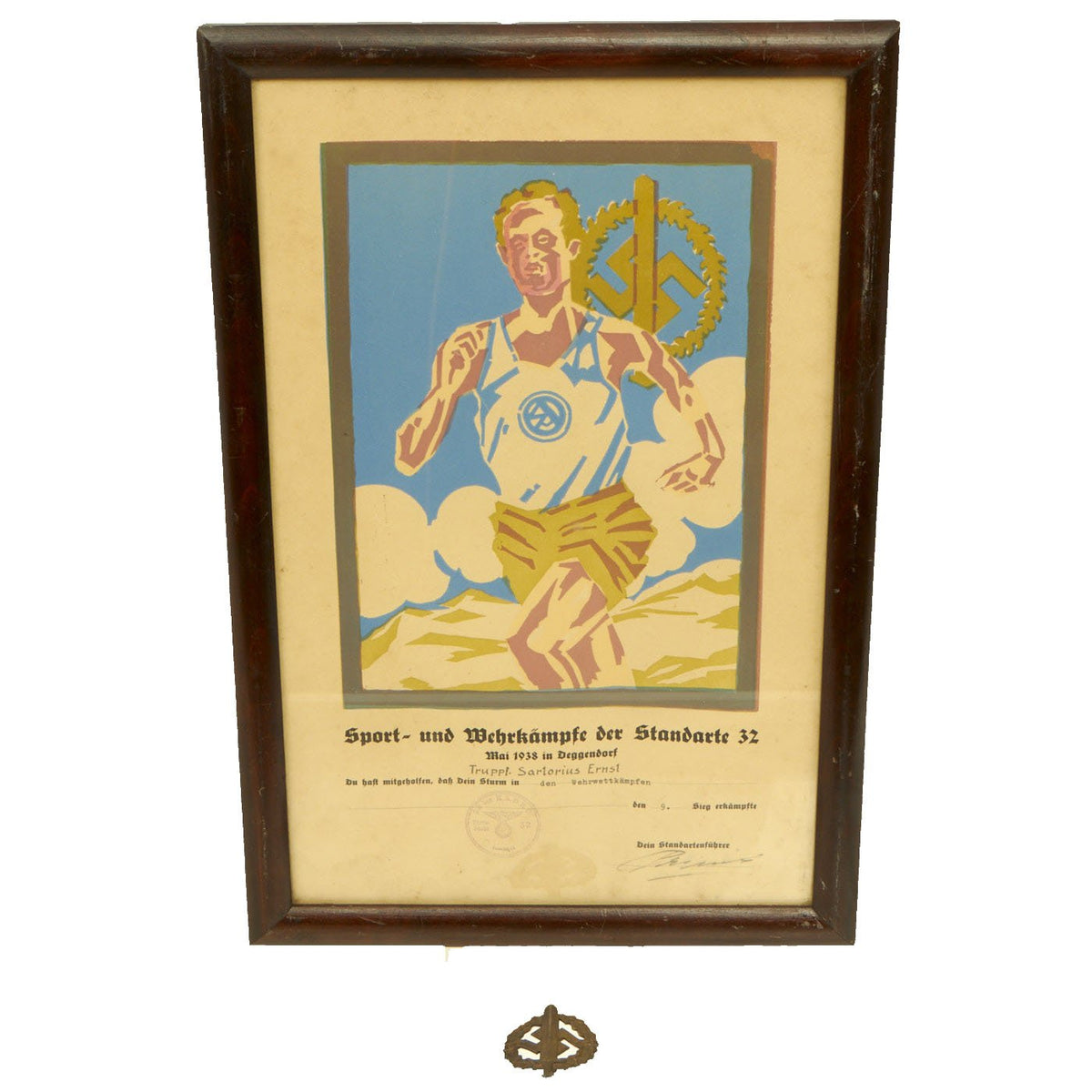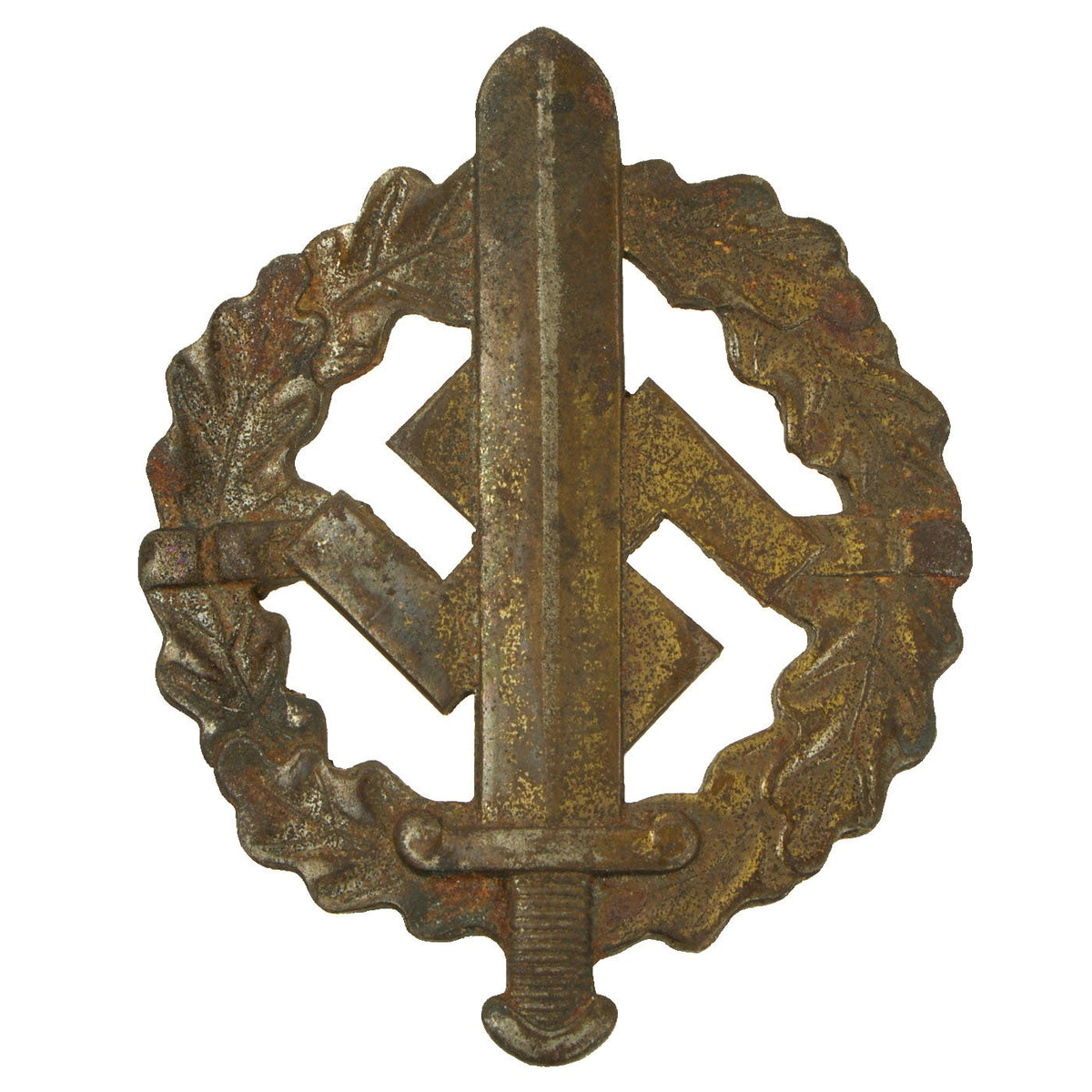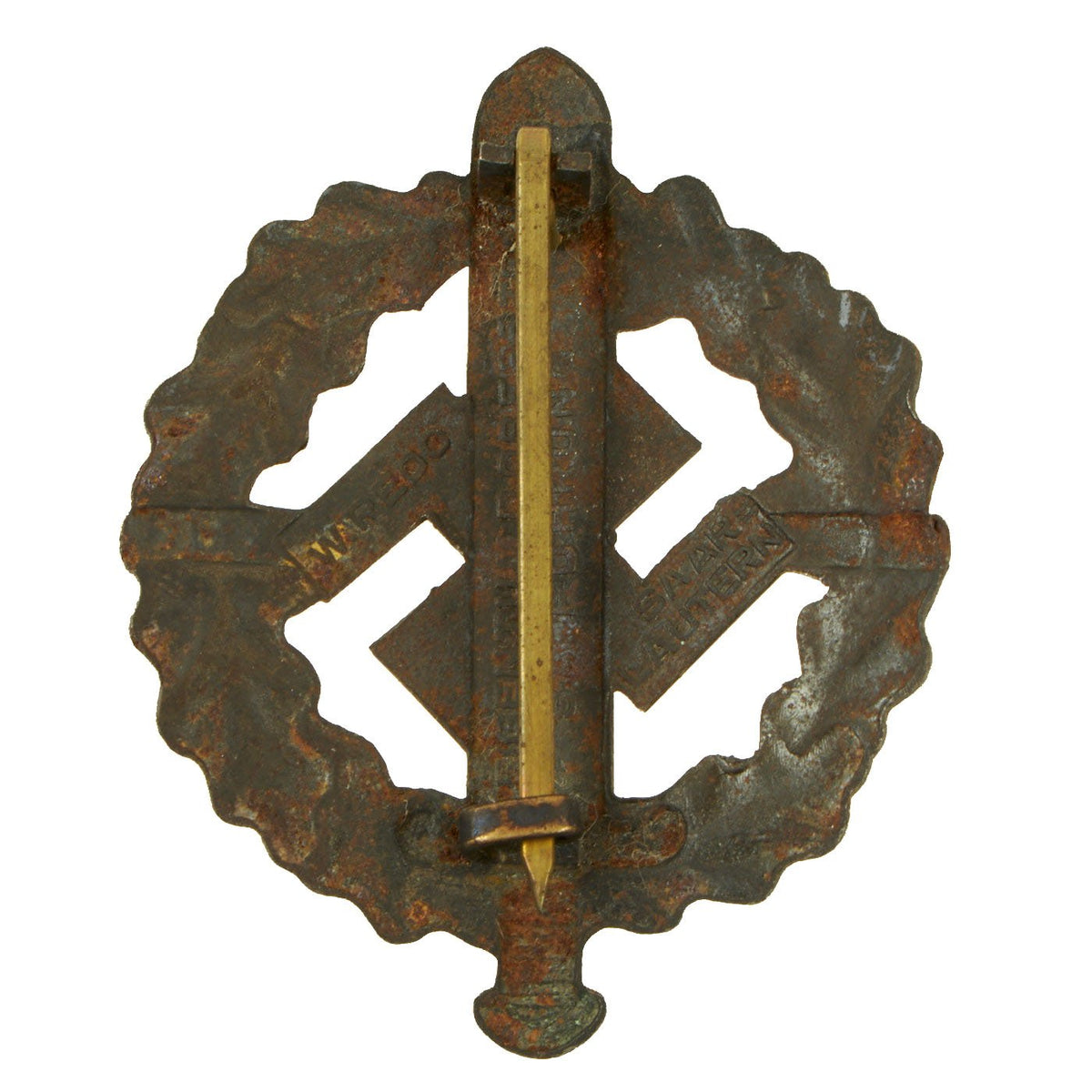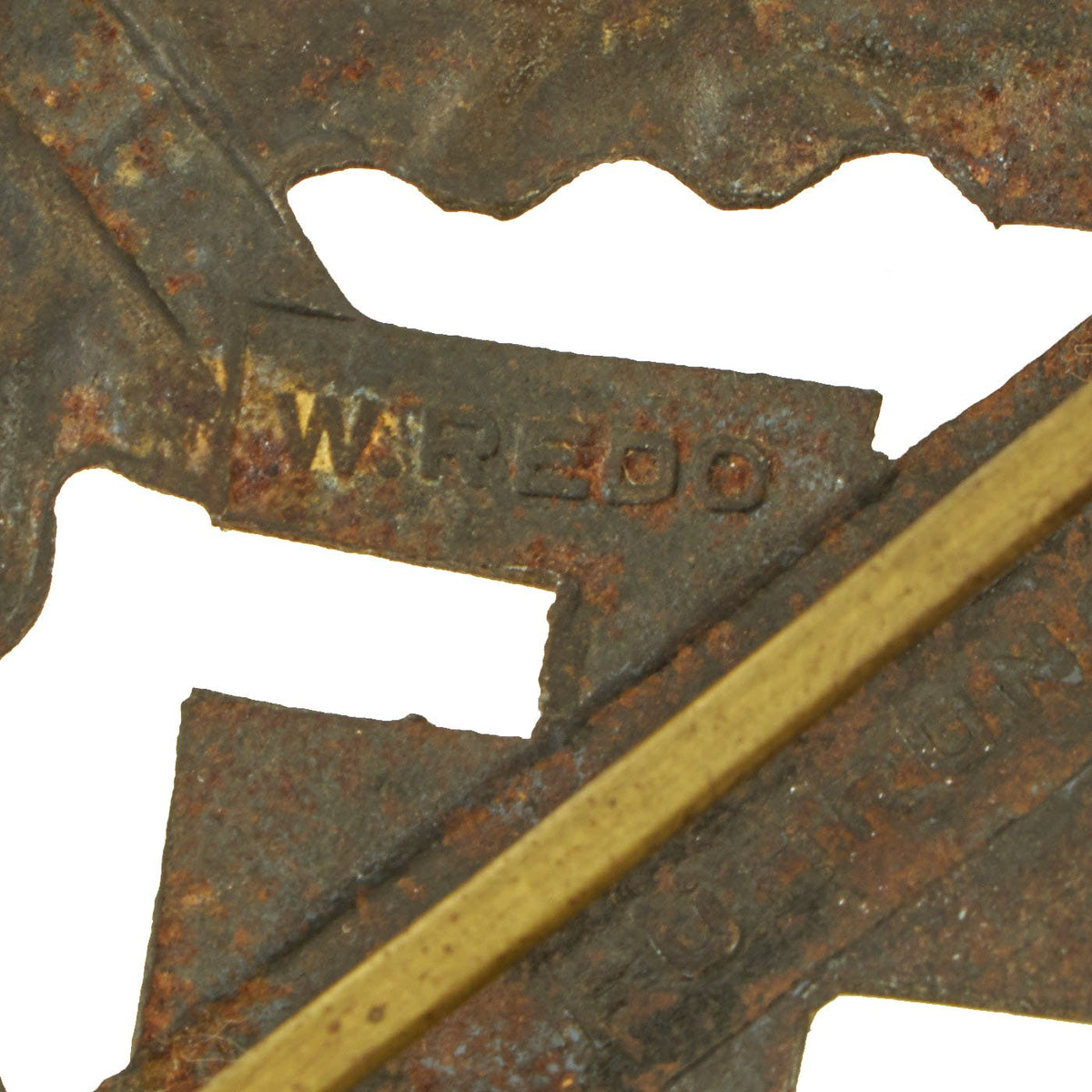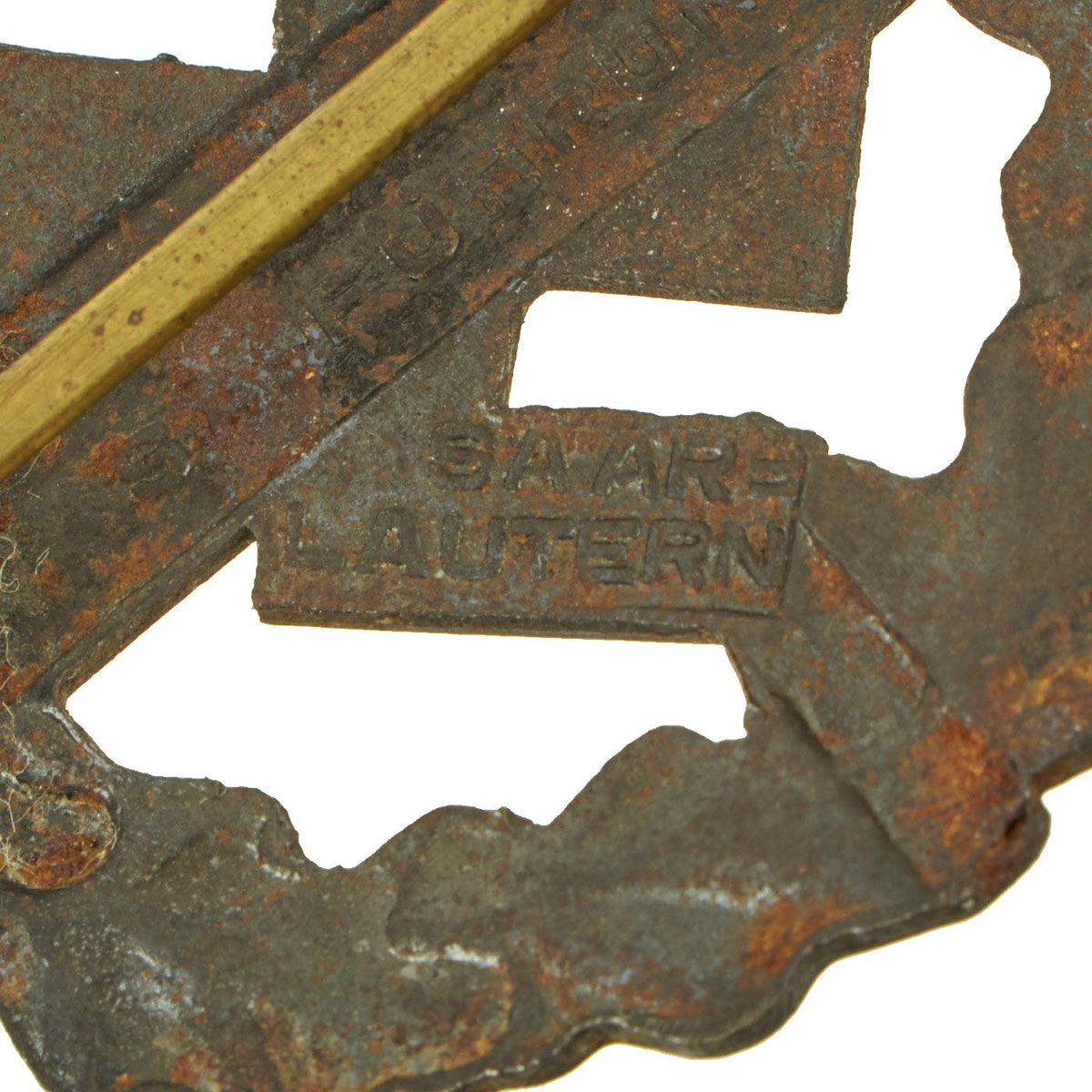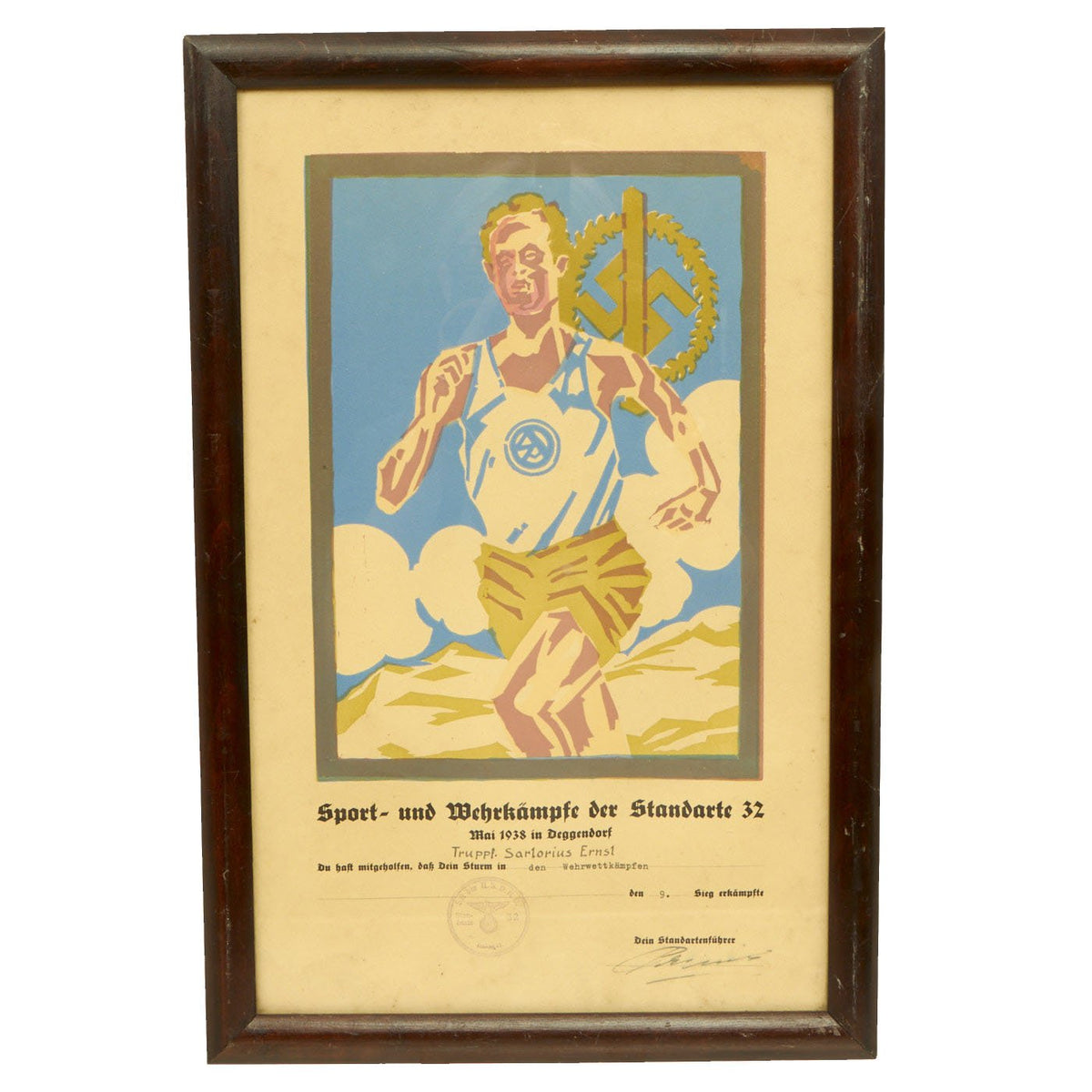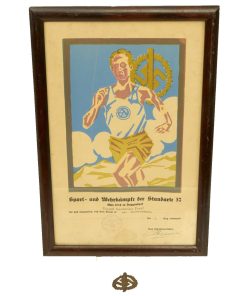Original German WWII Gold SA Sports Badge by Werner Redo with Framed Award Document Original Items
$ 495,00 $ 148,50
Original Item: Only One Available. This is a very nice SA Sports Badge in Gold Grade, the highest grade awarded, complete with an original named and dated award document! We have had many of the badges before, but never the document that they were presented with.
From what we can tell, the badge was awarded to Truppf. Sarlorius Ernsl, for a competition held during Mai 1938 in Deggendorf. “Truppf.” is short for Truppführer (Troop Leader), a NSDAP Paramilitary rank. It has all the proper stamps and signatures, and is nicely framed, measuring about 18″ x 12″.
The badge itself looks to be manufactured from stamped steel, which is magnetic, and was then covered with a gold wash, which may be ;bronze powder paint. It is maker marked on the back by W. REDO / SAARLAUTERN on the arms of the swas (hook cross). Werner Redo is a known manufacturer of this badge, located in Saarlautern, on the border with France. Today the town is known by its Pre NSDAP rule name, Saarlouis, the name it has born for centuries.
The badge has a very nice intact steel pin back, under which is the following marking:
EIGENTUM SPORTABZEICHEN
S.A. FÜHRUNG
This translates to “Property of the S.A. Sports Badge Leadership.” The badge is in great shape, with wear to the finish, and a great patina of age.
The SA Sports Badge was a decoration of NSDAP Germany that was issued between the years 1933 and 1945. It was a political version of the much more generic German Sports Badge, which was also issued in great numbers by the NSDAPs. At its center was a 57mm high Roman broad sword, superimposed over a NSDAP swas. It was encircled by an wreath of oak leaves. It was a pin-back badge. There was a cloth version, as well.
The SA Sports Badge was instituted on 28 November 1933 by then SA chief Ernst Röhm. It was originally only issued in bronze through the year 1935. The on 15 February 1935, AH decreed that the badge be officially recognized. It was thereafter issued in three grades (bronze, silver, and gold). No longer was the physical fitness badge to be awarded only to SA members, but to youth of all German military and paramilitary organizations. Originally the badge grade was awarded on degrees of “proficiency”. Then in 1936, a points system was established. In 1937, the requirement for the holder of the award was upgraded. Each recipient had to pass an annual proficiency test to retain the badge.
On 19 January 1939, jugend changed the name of the badge from SA-Sportabzeichen (SA Sports Badge) to SA-Wehrabzeichen (SA-Defence Badge). AH challenged all able-bodied boys age 16 and up to compete for the award. Older military men were also encouraged to obtain it. The badge was one of the few political decorations that the armed forces allowed to freely be displayed on a military uniform. By December 1936, one million had been awarded. Then by the end of 1943, over 2.5 million had been awarded.
The physical fitness program was divided into three sections, gymnastics, defensive sports and agricultural service. The badge was to be worn on the left breast, under the Iron Cross.
Grades:
– The Bronze SA Sport/Defence Badge was awarded to those who had successfully passed an educational and physical programme. This grade was discontinued in 1935.
– The Silver SA Sport/Defence Badge was awarded to those who held the Bronze badge for five years and had participated and passed the annual requirements and also having passed the age of 35.
– The Gold SA Sport/Defence Badge was awarded to those who held the Silver badge for six years and successfully participated in the annual requirements and were over 40 years old
Fast Shipping with Professional Packaging
Thanks to our longstanding association with UPS FedEx DHL, and other major international carriers, we are able to provide a range of shipping options. Our warehouse staff is expertly trained and will wrap your products according to our exact and precise specifications. Prior to shipping, your goods will be thoroughly examined and securely secured. We ship to thousands clients each day across multiple countries. This shows how we're dedicated to be the largest retailer on the internet. Warehouses and distribution centres can be located throughout Europe as well as the USA.
Note: Orders with more than one item will be assigned a processing date depending on the item.
Before shipping before shipping, we'll conduct a thorough inspection of the items you have ordered. Today, the majority of orders will be delivered within 48 hours. The delivery time will be between 3-7 days.
Returns
The stock is dynamic and we cannot completely manage it because multiple stakeholders are involved, including our factory and warehouse. So the actual stock may alter at any time. It's possible that you may not receive your order once the order has been made.
Our policy is valid for a period of 30 days. If you don't receive the product within 30 days, we are not able to issue a refund or an exchange.
You can only return an item if it is unused and in the same state as the day you received it. You must have the item in its original packaging.
Related products
Uncategorized
Uncategorized
Uncategorized
Uncategorized
Uncategorized
Armoured Fighting Vehicles of the World: AFVs of World War One (Hardcover Book) New Made Items
Uncategorized
Uncategorized
Uncategorized
Uncategorized
Uncategorized
Uncategorized
Armored Burgonet Helmet & Polearm from Scottish Castle Leith Hall Circa 1700 Original Items
Uncategorized
Uncategorized
Uncategorized
Australian WWII Owen MK1 Machine Carbine SMG Custom Fabricated Replica with Sling Original Items
Uncategorized
Uncategorized
Band of Brothers ORIGINAL GERMAN WWII Le. F.H. 18 10.5cm ARTILLERY PIECE Original Items
